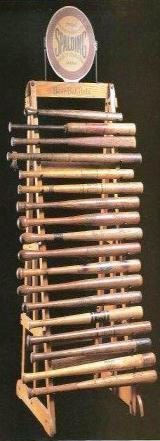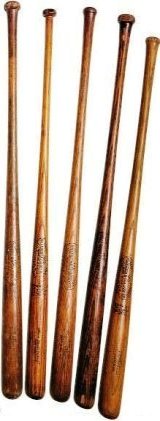Do you have any recommendations for team pitching goals similiar to the team hitting goals described?
by Eric
(Lawton, OK)

I became a good pitcher when I stopped trying to make them miss the ball and started trying to make them hit it.

I try to do two things: Locate my fastball and change speeds. That's it. I try to keep it as simple as possible. I just throw my fastball to both sides of the plate and change speeds every now and then.
Eric asked: I love the concept of the team hitting goals. I believe it will benefit my team tremendously. I was wondering if you have any recommendations or ideas when it comes to team pitching goals?
Rick answered: Eric, thank you for your question.
Some thoughts for pitchers:
1. Get rid of hitters in 4 pitches or less.
2. Throw 1 of your first 2 pitches for a strike.
3. Throw 2 strikes in your first 3 pitches.
4. If you are having a good day, throw 2 of the first 3 pitches for a strike, using 2 different types of pitches.
7. Throw 66% strikes or better.
8. Throw less than 15 pitches per inning.
9. You have a pitch when you can throw it 60% of the time for a strike, and you then have to use it 15% or more, in a game. Otherwise, it is just something that you throw.
Pitching Philosophy:
1. Work quick.
2. Change speeds.
3. First pitch strikes.
4. Stay ahead.
5. Finish hitters off.
6. Never throw the same pitch, at the same speed, in the same location, to the same hitter!
The hitting splits listed below are for MLB, in 2000, 2007, 2008, 2009. Running them for 4 years, they stay remarkably close year after year.
Have not run them for 2010 or 11; but you can bet they are very similar. Hitting with 2 strikes is tough, pitching with two strikes is much easier.
While they can be effectively used to show hitters the advantage of hitting early in the count, not getting behind, they can be used in the same context for pitchers.
Pitchers can readily see that by throwing strikes and getting ahead, their chances of success are greatly improved.
If these splits are true for MLB, they are certainly more true for youth and amateur baseball. Hitting with 2 strikes is meager at best. Pitching with 2 strikes becomes a tremendous advantage.
Hitting Splits MLB 2009:
Count 2000 2007 2008 2009
0-0 .336 .344 .337 .338
1-0 .343 .341 .339 .340
2-0 .360 .350 .355 .368
3-0 xxxx .396 .370 .395
0-1 .324 .324 .339 .317
1-1 .325 .327 .329 .332
2-1 .340 .339 .339 .339
3-1 .344 .368 .350 .352
0-2 .160 .164 .160 .156
1-2 .178 .170 .179 .171
2-2 .195 .191 .194 .189
Full .234 .230 .227 .233
You may want to reset the numbers and percentages to fit your particular age group, level of competition and individual players.
Stay flexible. Adjust it to your situation and kids. It can provide them goals to shoot for, and increase their level of concentration. As you go back over the performances, you may want to lower the expectations some, or raise them, depending on the individual.
Once they catch on to the idea of getting ahead and staying ahead in the count, their success level will rise, as will their confidence. It's like a snowball headed down hill.
Their pitch counts go down, thus their numbers of innings can go up. The less pitches they throw, the longer their arms will stay healthy. Win/win for everyone.
Good luck as you go forward, have fun! It's a great game.
Yours in baseball,
Rick
Click here to post comments
Join in and write your own page! It's easy to do. How? Simply click here to return to Ask The Baseball Coach.
|






